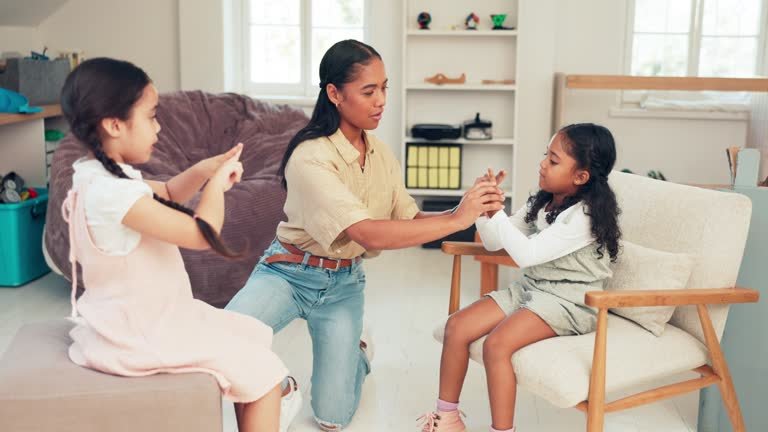
- calendar_month September 23, 2024
- folder Community Engagement
Sharing Tags
ASL Benefits, Building Connections Through ASL, Cognitive Benefits of Sign Language, Deaf Community Awareness, Inclusivity Through Sign Language, International Day of Sign Languages, JohnHart, JohnHart Real Estate, Learning Sign Language, Love In Any Language, Nathan Derry, Nathan Derry JohnHart, Nathan Derry Real Estate, Nathan Derry Realty, Nathan Derry Recommends, Nathan Derry Tips, Nathan Derry, JohnHart Real Estate, Nonverbal Communication, Sign Language for Kids

As we celebrate the International Day of Sign Languages, I can’t help but reflect on a memory from my middle school days. I learned to sign the song "Love In Any Language" by Sandi Patty, a beautiful song with a message of unity and understanding that resonates deeply with me to this day. I still remember how to sign that song, and it’s something I treasure—especially in these times when the message of love and understanding feels more important than ever. I often find myself wishing I had learned more American Sign Language (ASL) beyond that experience.
The Universal Power of Sign Language

Many people associate sign language exclusively with the Deaf and hard of hearing communities, but it’s so much more than that. Sign language is a powerful tool of communication that transcends sound, helping people connect across barriers that exist in various forms. While it provides a vital means of communication for those with hearing impairments, its benefits extend far beyond.
How Sign Language Helps More Than Those with Impaired Hearing

-
Enhanced Communication in Noisy Environments: In environments where verbal communication is difficult—like a noisy restaurant or a concert—knowing some ASL can allow people to communicate effortlessly without shouting or misunderstanding. It’s a discreet and effective way to convey messages when spoken words are drowned out.
-
Support for Nonverbal Individuals: ASL offers a means of communication for individuals who are nonverbal for various reasons, including autism, Down syndrome, or speech impairments. By learning sign language, families and friends of nonverbal individuals can open up whole new avenues for meaningful interactions.
-
Early Childhood Development: Teaching babies and toddlers basic sign language has been shown to improve language acquisition and reduce frustration when they are still too young to articulate their needs. Signs for words like "eat," "more," or "help" allow children to communicate before they can speak, creating a smoother development process.
-
Promotes Inclusivity and Empathy: Learning ASL or even just a few basic signs fosters a sense of inclusivity. It helps bridge the gap between the Deaf and hearing communities, encouraging empathy and understanding in everyday interactions. Those who use sign language, whether as a necessity or as a secondary skill, feel more connected to others when their language is recognized and understood.
-
Cognitive Benefits: Much like learning any new language, ASL promotes cognitive development. It strengthens memory, improves reaction times, and enhances problem-solving skills. Using sign language engages different parts of the brain, providing a full-body learning experience that incorporates visual, motor, and auditory skills.
-
Accessibility in Healthcare and Emergency Situations: In healthcare settings or emergencies, knowing ASL can be crucial. Healthcare professionals who know sign language can offer more inclusive and timely care, ensuring that patients or individuals in distress are understood when they can’t communicate verbally.
-
Bridging Cultural Gaps: Sign language isn’t universal—different countries and regions have their own versions. However, gestures and nonverbal cues tend to be more universally understood across cultures. Even if someone doesn’t know ASL specifically, using hand signals and signs can sometimes facilitate communication between people who don’t share a spoken language.
-
Expressing Emotions Through Movement: Sign language can be an incredibly expressive form of communication. Because it engages the whole body, it allows people to express emotions in a way that’s often more visual and dynamic than spoken language. For example, signing the lyrics to a song like "Love In Any Language" can add a layer of depth to the message, emphasizing the beauty of the words through movement.
-
Improving Focus and Attention: Studies have shown that people who use sign language are often better at focusing on visual cues and can process information more quickly. This is a useful skill for everyone, particularly in our modern world where distractions are everywhere.
-
Building Stronger Connections: Ultimately, sign language helps us build stronger connections with those around us. Whether you're signing with someone who is Deaf, hard of hearing, or simply using it in a moment when verbal communication isn’t possible, you’re fostering a sense of understanding and inclusion. It’s a powerful reminder that love, care, and empathy can be communicated in any language.
A Wish for More Understanding

As someone who learned to sign a beautiful song like "Love In Any Language," I’ve always felt that sign language is a special tool that brings us closer to one another. It’s something I wish more people would take the time to learn—not only to communicate with those in the Deaf community but to enhance their ability to connect with others in a meaningful way.
So, on this International Day of Sign Languages, I encourage you to explore ASL or any sign language. Whether you’re learning a few basic signs or diving into full conversations, you’ll be opening yourself up to a new way of connecting and understanding—something we can all use a little more of.
Nathan Derry
Realtor, JohnHart Real Estate

📍JohnHart Real Estate
📞(424) 303-0440
📧 nathan@jhagents.com
👨🏽💻 itsnathanderry.com
You deserve the opportunity to work with an ethical agent. Please give me a call today and let’s discuss your unique needs.
Interested in seeing a property or one of my off market properties in person? Contact me today! Who you hire matters!!!
Ready to make the best move of your life… let’s chat today!
